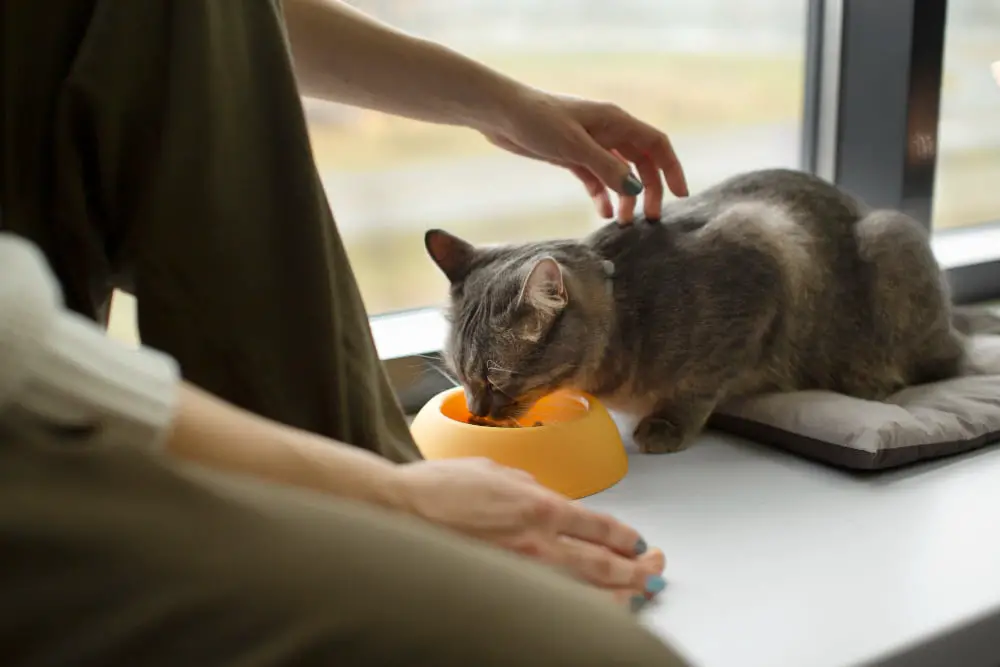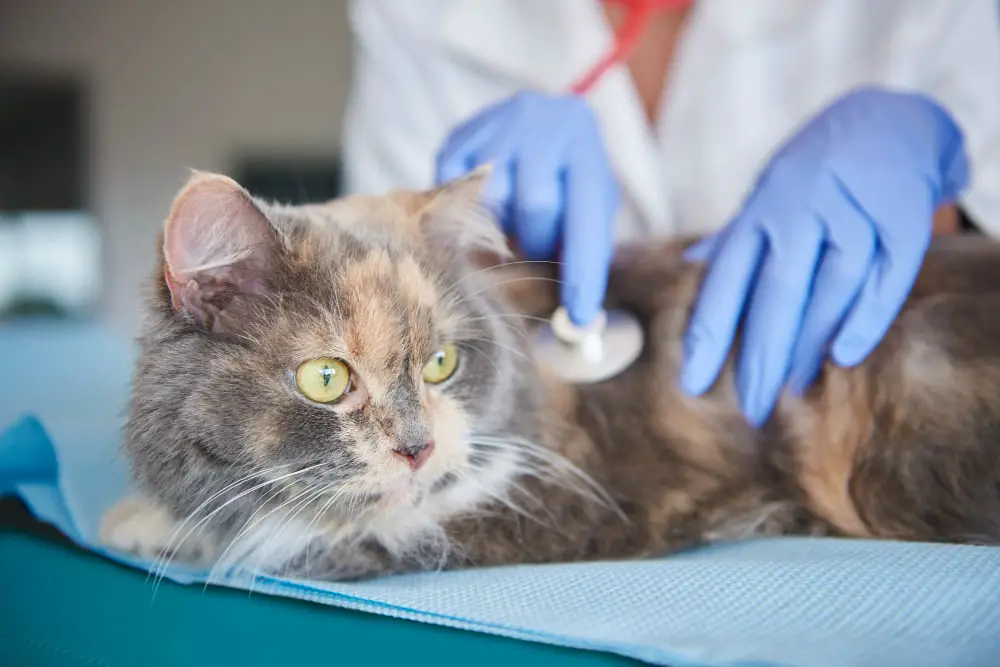Last updated on
Cats, with their often inscrutable expressions and independent nature, can make it challenging to discern when they require veterinary care. This complexity underscores the importance of understanding the subtle signs of distress or illness in our feline companions. Having a reliable source of information is crucial for cat owners, as it allows them to make informed decisions about their pets’ health and well-being.
If you are a cat owner, you should have access to comprehensive insights on feline health and behavior, so you can ensure that your furry friend receives the best possible care. Read on to learn more about how you can provide your cat with a long and healthy life.
Detecting Changes in Feline Eating Habits

Observing your cat’s eating patterns can provide critical insights into their overall well-being. Sudden alterations, such as a marked decrease or increase in appetite, could be indicative of underlying health issues ranging from dental problems to systemic illnesses.
It is of particular concern when a cat that normally has a hearty appetite suddenly becomes disinterested in food or exhibits difficulty swallowing. On the other hand, an increase in hunger might be symptomatic of diabetes or hyperthyroidism, conditions that require prompt veterinary intervention.
Cat owners should monitor not just the quantity of food consumed but also the demeanor of their cat during meal times, as behavioral changes can also signal discomfort or distress. An informed cat owner stands as the first line of defense in detecting and addressing these potential health alarms in their early stages.
Finding Bloody Stools
The presence of blood in a cat’s stool should never be overlooked, as it is a prominent red flag for various health conditions. Hematochezia, the term for bright red blood in the feces, often signifies issues in the lower gastrointestinal tract, such as colon inflammation or colorectal cancer.
Conversely, melena, characterized by a darker, tar-like stool due to digested blood, typically points to bleeding in the upper GI tract. Parasitic infections, dietary intolerance, inflammatory bowel disease, or even trauma from foreign object ingestion are among the myriad possible causes.
If you notice blood in cats poop, prompt veterinary diagnosis and intervention are important, as timely treatment can significantly influence the prognosis. Cat owners noting this symptom should thus seek immediate veterinary evaluation to determine the underlying cause and implement appropriate care protocols.
Lethargy and the Signs of Dehydration

Proper hydration is paramount for maintaining a cat’s health, as it is essential for various physiological processes, including circulation, digestion, and waste elimination. Dehydration in cats can manifest through several symptoms, such as lethargy, dry gums, and decreased skin elasticity. These may indicate a lack of water intake or more serious conditions, such as kidney disease or diabetes.
It’s crucial for cat owners to ensure their pets have constant access to fresh water and to observe any shifts in their drinking habits. If you’re uncertain about your cat’s hydration levels, a prompt consultation with a veterinarian can provide valuable guidance and prevent further complications.
Recognizing Respiratory Distress in Cats
Cats may experience respiratory problems that are not always immediately apparent to their owners. Signs of respiratory distress in cats include difficulty breathing, rapid breathing, persistent coughing, or abnormal lung sounds when listened to with a stethoscope.
These symptoms can indicate conditions such as asthma, bronchitis, or even heart disease. In some cases, acute events like choking or inhaling a foreign object can trigger respiratory difficulties.
If a cat shows any signs of respiratory distress, it is crucial to seek immediate veterinary care, as these conditions can quickly worsen. Early veterinary assessment and treatment can be life-saving and may involve diagnostic imaging such as X-rays or CT scans to determine the cause, followed by appropriate medical or surgical intervention.
Visible Issues with Teeth
The dental health of a cat is a crucial element of its overall physical condition, often going unnoticed until alarming symptoms arise. Periodontal disease is prevalent among felines and can lead to significant ramifications if untreated, including oral pain, tooth loss, and even more severe health issues as the infection spreads to systemic organs.
Owners may observe halitosis (bad breath), reluctance to eat, pawing at the mouth, or visible tartar buildup as cardinal signs of dental disease. Regular veterinary checkups, inclusive of oral examinations, are vital for the early detection and management of dental conditions.
It is advisable for cat owners to also familiarize themselves with the basics of feline oral hygiene practices, such as brushing their cat’s teeth and offering dental-friendly toys or treats, as preventative measures to preserve their pet’s dental well-being.
Proactive observation and consistent care are the cornerstones of maintaining a cat’s health, and the responsibility rests heavily on the shoulders of the cat owner. Equipped with the knowledge of what signs to watch for in eating habits, stool changes, hydration levels, respiratory function, and dental health, owners are well-prepared to prevent or catch early indications of illness in their feline friends.
The role of regular veterinary visits cannot be overstated, as they are instrumental in the early diagnosis and management of potential health issues. Cat owners who invest time learning about their pet’s health and monitoring for these critical signs can greatly contribute to ensuring their beloved companions lead healthy, happy lives.
It is this vigilant care and informed attention that underscores the bond between cats and their human companions, ultimately optimizing the quality of life for these cherished animals.
Recap




